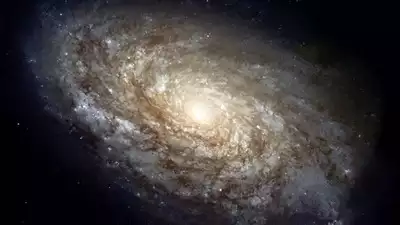According to new research, the earliest “building blocks” of our Milky Way galaxy were discovered between 12 and 13 billion years ago, which is extremely close to the time when the universe’s first galaxies began to form.
Astronomers dubbed these star clusters “Shakti” and “Shiva,” describing the discoveries as analogous to “discovering remnants of a first settlement that expanded into a sizable modern metropolis.”
The researchers claim that smaller galaxies merged to form the Milky Way, creating “fairly large building blocks” in the process.
They clarified that when galaxies collide and their stellar populations mix, the majority of the stars maintain very basic characteristics that are closely related to the direction and speed of their parent galaxy.
The Max Planck Institute for Astronomy research team in Germany analysed stellar datasets for this study, which was published in The Astrophysical Journal. They discovered that stars from the merging galaxies were concentrated around two distinct signatures of energy and angular momentum, or the rate at which an object’s rotating speed changes. As a result, two distinct star groups, Shiva and Shakthi, were created.
These two entities were dubbed Shakti and Shiva by the study’s co-author Khyati Malhan; the latter is one of the main deities in Hinduism, while the former is a cosmic feminine force that is frequently depicted as Shiva’s consort.
The “like-minded” stars from two different galaxies that formed Shakti and Shiva were found to have a higher angular momentum than the stars in the centre of the Milky Way.
According to the team, the higher angular momentum seen was consistent with the stellar groups that had previously belonged to distinct galaxies merging with the Milky Way.
Furthermore, the low metal content of each of these stars indicated that they had formed a long time ago. They explained that heavier metallic elements are more prevalent in recently formed stars.
Therefore, “Shakti” and “Shiva” are good candidates for some of the earliest ancestors of our Milky Way because of their energy and angular momentum as well as their low metallic content, which is comparable with that of the stars at the centre of the Milky Way, the researchers said.
“Shakti and Shiva represent two of those early, massive progenitors that coalesced at high redshift – perhaps 12 gigayears ago – perhaps the last event from the protogalaxy before disc formation commenced,” their research stated. A billion years make up a gigayear.
According to Hans-Walter Rix, a co-author of the study from the Max Planck Institute for Astronomy, Shakti and Shiva may have been the first two objects to enter the Milky Way’s core and start its progression into a massive galaxy.
Utilising the Gaia data from the European Space Agency and the stellar datasets from the US Sloan Digital Sky Survey, the researchers were able to analyse the stars’ chemical composition in great detail.
Gaia was launched in 2013, and as of now, its dataset contains the positions, changes in positions, and distances of nearly 1.5 billion stars in our galaxy. According to the team, this makes it the perfect dataset for this type of “big data galactic archaeology”.



































